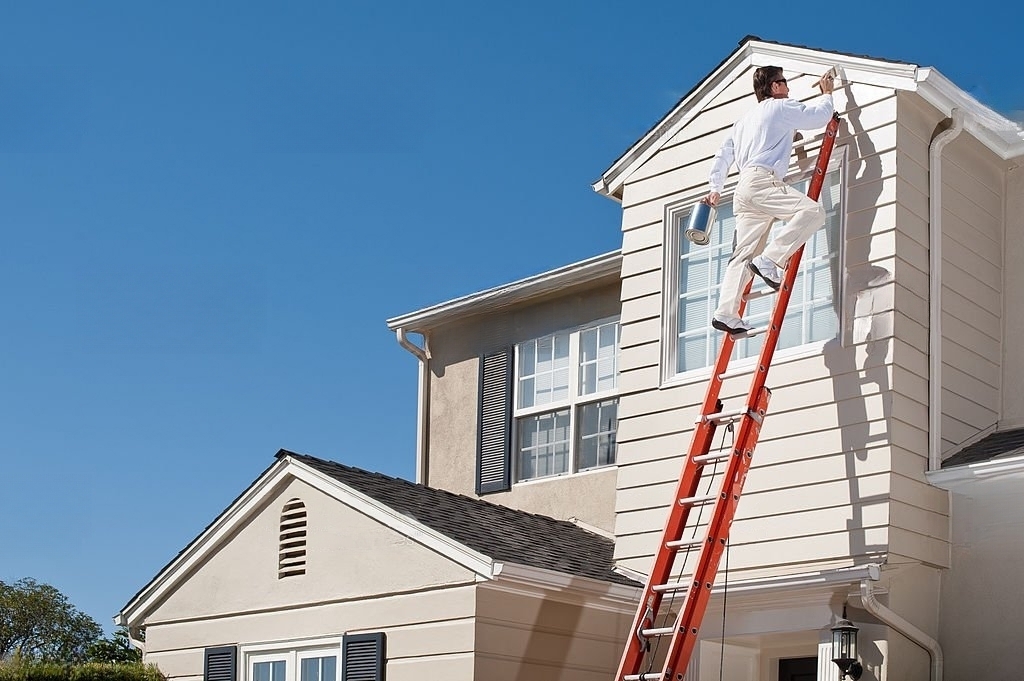Exterior Painting Tips & Tricks In UK
Are you planning to give your home a fresh new look by painting the exterior? Exterior painting can be a daunting task, but with the right tips and tricks, you can achieve professional-looking results. In this article, we will provide you with valuable insights and step-by-step guidance to make your exterior painting project a success.
Table of Contents
- Introduction: Why Exterior Painting Matters
- Choosing the Right Paint Colors
- Preparing the Exterior Surface
- Tools and Equipment You'll Need
- Priming: The Key to a Long-Lasting Finish
- Techniques for Painting Exterior Walls
- Painting Trim, Doors, and Windows
- Dealing with Common Exterior Painting Challenges
- Maintaining and Protecting Your Painted Exterior
- Enhancing Curb Appeal with Finishing Touches
- Conclusion
- FAQs
1. Introduction: Why Exterior Painting Matters
The exterior of your home is the first thing people notice, and a fresh coat of paint can significantly enhance its curb appeal. Beyond aesthetics, exterior painting also protects your home from weather damage, such as moisture, UV rays, and mold growth. Therefore, it's crucial to approach your exterior painting project with care and attention to detail.
2. Choosing the Right Paint Colors
Selecting the perfect color scheme is an essential step in exterior painting. Consider the architectural style, surroundings, and your personal preferences. Opt for colors that complement each other and create a harmonious look. It's also advisable to choose paint colors that are compatible with the existing elements of your home, such as the roof and landscaping.
3. Preparing the Exterior Surface
Proper preparation is key to achieving a flawless and long-lasting paint job. Start by thoroughly cleaning the surface, removing dirt, debris, and any loose or peeling paint. Repair any damaged areas, such as cracks or holes, and sand the surface to create a smooth and even base for the paint. Don't forget to protect nearby surfaces, windows, and landscaping with drop cloths and painter's tape.
4. Tools and Equipment You'll Need
To ensure a successful painting project, gather all the necessary tools and equipment beforehand. Some essential items include paintbrushes, rollers, extension poles, paint trays, a ladder, and a power washer for cleaning the surface. Invest in high-quality tools to achieve better results and make the painting process more efficient.
5. Priming: The Key to a Long-Lasting Finish
Priming the exterior surface before painting is crucial for better paint adhesion and durability. Use a high-quality primer that is suitable for the surface material, whether it's wood, stucco, or brick. Primer helps seal the surface, prevents stains from bleeding through, and ensures a smoother and more even finish.
6. Techniques for Painting Exterior Walls
When painting the exterior walls, it's essential to use the right techniques to achieve professional results. Start from the top and work your way down, applying the paint evenly in long, smooth strokes. Be mindful of the weather conditions, avoiding painting in direct sunlight or on a windy day. Consider using an airless paint sprayer for large surfaces, as it provides a more even and efficient application.
7. Painting Trim, Doors, and Windows
The trim, doors, and windows play a significant role in the overall appearance of your home's exterior. Take the time to prepare these areas properly by sanding, priming, and filling any imperfections. Use painter's tape to create clean lines and apply the paint in thin coats, allowing each coat to dry before applying the next. Consider using a different color or finish to make the trim and accents stand out.
8. Dealing with Common Exterior Painting Challenges
Exterior painting can come with its fair share of challenges. Some common issues include peeling paint, mildew growth, and uneven application. To address these challenges, ensure proper surface preparation, use high-quality paint and materials, and follow the manufacturer's instructions. If you encounter specific issues, consult a professional painter for expert advice.
9. Maintaining and Protecting Your Painted Exterior
After completing your exterior painting project, it's crucial to take steps to maintain and protect the painted surface. Regularly inspect for any signs of damage or wear, and promptly address any issues. Consider adding a clear protective sealant to extend the life of the paint and enhance its resistance to moisture and UV rays. Regular cleaning and touch-ups will help your exterior paint job look fresh and vibrant for years to come.
10. Enhancing Curb Appeal with Finishing Touches
To elevate the overall look of your home's exterior, consider adding finishing touches. These can include installing new house numbers, updating the front door hardware, adding outdoor lighting fixtures, or incorporating decorative elements such as shutters or flower boxes. These small details can make a big difference in enhancing the curb appeal of your home.
11. Conclusion
Exterior painting is a rewarding project that can transform the look of your home and protect it from the elements. By following the tips and tricks outlined in this article, you can achieve professional-quality results. Remember to choose the right colors, prepare the surface properly, use the appropriate tools and techniques, and maintain the painted exterior to ensure its longevity and beauty.
FAQs
1. How often should I repaint the exterior of my home? The frequency of repainting depends on various factors such as the quality of the previous paint job, weather conditions, and the type of surface. As a general guideline, it's recommended to repaint every 5-10 years.
2. Can I paint the exterior of my home myself, or should I hire a professional? While painting the exterior of your home can be a DIY project, it requires proper preparation, techniques, and equipment. If you're not confident in your abilities or if your home has complex architectural features, it's advisable to hire a professional painter.
3. What type of paint should I use for the exterior of my home? The type of paint you should use depends on the surface material. For example, use an exterior latex paint for wood and stucco surfaces, and a masonry paint for brick or concrete surfaces. Consult with your local paint supplier for specific recommendations.
4. How can I protect my landscaping while painting the exterior of my home? Cover plants, shrubs, and delicate landscaping features with drop cloths or plastic sheets before starting the painting process. This will protect them from accidental paint splatters or damage.
5. What are some popular color trends for exterior painting? Neutral tones such as grays, beiges, and off-whites are currently popular for exterior painting. However, it's important to choose colors that harmonize with the overall aesthetics of your home and blend well with the surrounding environment.
In conclusion, with these exterior painting tips and tricks, you'll be well-equipped to embark on your painting project confidently. Remember to plan carefully, invest in quality materials, and take your time to ensure a beautiful and long-lasting result. Enjoy the process and the transformation it brings to your home's exterior.

